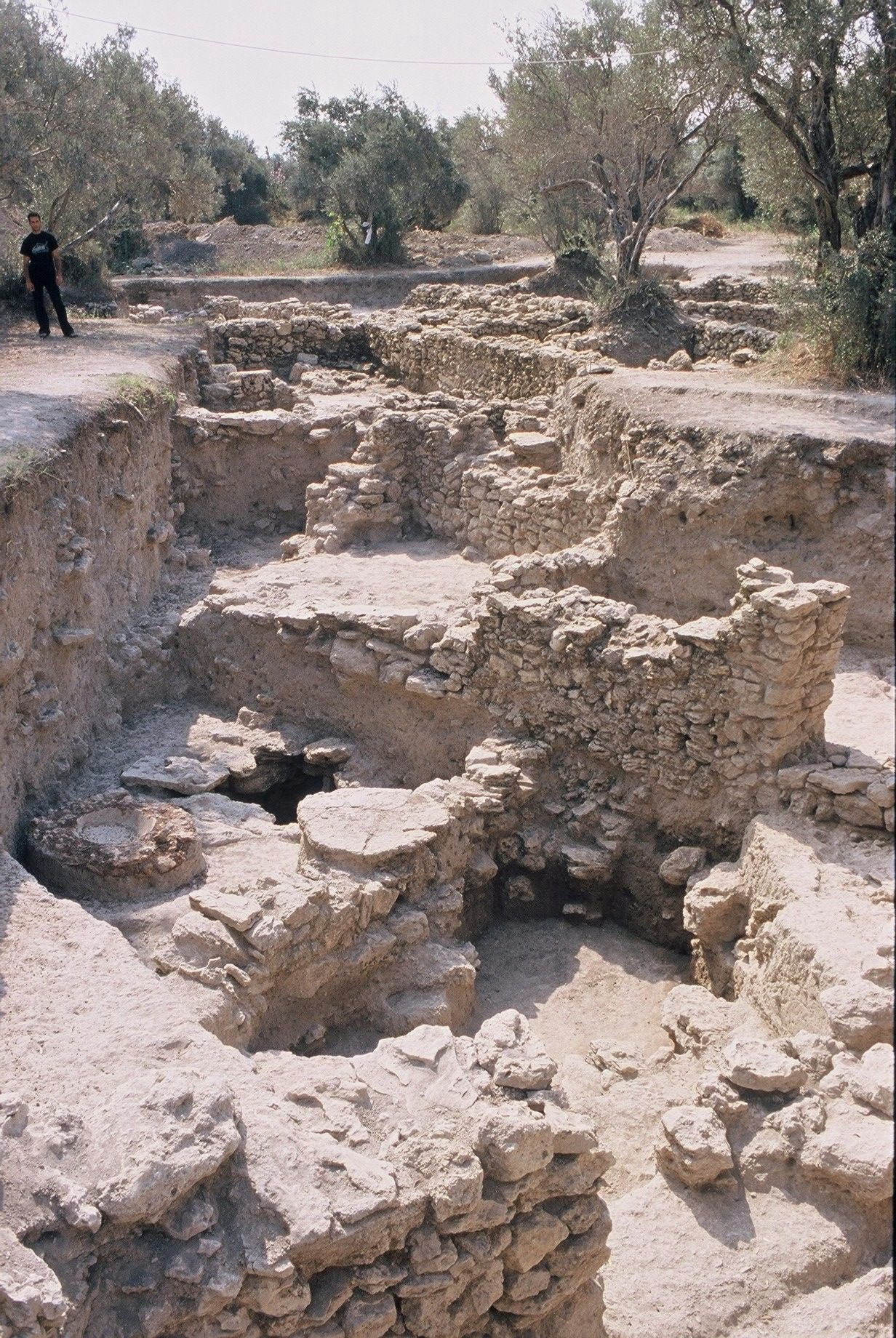
The Mediterranean diet might conjure images of whole grains, fish, a side of cucumber and tomato salad, and a glass of red wine. While the diet, known for its link to longevity and health, has skyrocketed in popularity in recent years, this eating pattern is far from new. In fact, a recent study reveals that this way of eating has persisted for millennia. Published today in the journal PLoS ONE, a paper looked at the agricultural and diet patterns of people living in what’s now Syria during the Middle Bronze Age, which occurred from 2000 to 1600 BCE. It turns out humans have been eating a Mediterranean diet since at least the Bronze Age.
The research looks at plant, animal, and human remains from an archaeological site in modern-day Syria known as Tell Tweini on the coast of the Mediterranean Sea. Tell Tweini is located near the modern town Jableh, and was once part of an ancient harbor city called Gibala, the southernmost town of the Ugarit Kingdom in the Levant.
“Understanding ancient cultures is not only important for archaeologists, but for anyone interested in the history of the origins and development of humankind,” Simone Riehl, professor of archaeobotany at the University of Tübingen in Germany, tells Inverse. Food especially is telling of all sorts of conditions. “One of the oldest culturally anchored expressions of human life is food.”

The team from Belgium, Germany, and Canada performed isotopic analysis on plant, animal, and human remains from this site. Their results demonstrate that, among other things, the inhabitants of Tell Tweini consumed food consistent with what we now know as the Mediterranean diet. They also seemed to use animals for farm labor rather than sustenance, and they were excellent grape cultivators. In particular, the results suggest that residents of Tell Tweini ate a diet rich in grains like emmer and durum wheat, olives, pulses, grapes, dairy, and a small amount of meat.
The researchers gleaned their findings from analysis of 410 plant seeds, 210 animal bones, and 16 human bones. The paper found that within these relics “at the atomic level are stable isotope ratios of carbon and nitrogen.” Isotopes are elements with variations in the number of neutrons they have, and they reside in bones and teeth. When measured, these isotopes convey key information about everything from agricultural practices and local climate patterns to animal keeping and diet.
“The old phrase ‘you are what you eat’ really is true here,” says Benjamin Fuller, an archaeological chemistry researcher at the University of Leuven in Belgium. “The technique of stable isotope ratio analysis allows the direct determination of the type of food groups that were actually consumed.”
The paper describes that teeth and bones hold the protein collagen, which is rich in carbon and nitrogen. Carbon and nitrogen isotopes, specifically carbon-13 and nitrogen-15, are stable enough that they stick around in the body after consumption. The ratio of carbon and nitrogen in collagen reflects that of a plant or animal proteins that this person ate while living. Particular ratios of carbon and nitrogen isotopes indicate whether a protein came from a plant or animal, which can tell us the composition of someone’s diet.
This technique also clues us into agricultural practices. Fuller says that grapes had the highest carbon isotopic results of all the plants, which suggests “they were likely very well cared for and experienced excellent growing conditions,” reflecting the importance of grapevine production during the Bronze and Iron Ages in this region. Even during fraught times of climate and social change, Fuller says, “the inhabitants of Tell Tweini devoted a lot of focus and care to their vineyards.”
Animals were still key to agriculture in Tell Tweini, the researchers hypothesize. Riehl says that cattle, sheep, and goats in these cultures “were primarily agricultural work animals” crucial to cheese and wool production rather than meat. Fuller agrees and depicts what the circumstance may have been: “If your cow was used for its secondary products such as cheese or milk as well as being your tractor, you would not kill it and eat it right away.”
So way back in the day, it appears the Mediterranean diet was a consequence of pragmatism. Subsisting primarily on crops meant preserving animals for other uses. Even if most of us don’t have to consider what we eat in the same way, Riehl suggests we could still benefit from a more thoughtful agricultural and eating practice. To her, this research shows us how improving animal husbandry conditions and reducing meat consumption can be good for us and animals.







